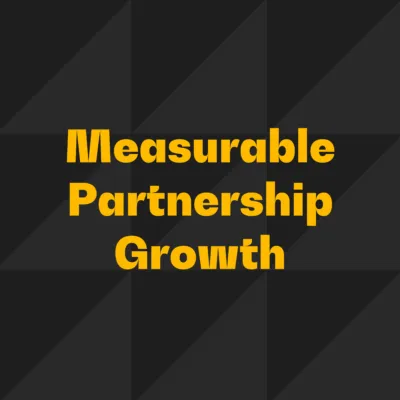What do Ben & Jerry’s, Apple, and Adidas YEEZY have in common? If you’re struggling to connect the dots, I have two words for you: brand equity.
David Aaker, the “Father of Modern Branding,” defines brand equity¹ as: “A way to describe the value of having a recognized brand, based on the idea that firmly established and reputable brands are more successful. More specifically, it’s a set of brand assets and liabilities linked to a brand name and symbol, which add to or subtract from the value provided by a product or service.”
With this definition in mind, the average cost for a pint of Ben & Jerry’s is $5.50, nearly twice as much as a one-quart container from a typical grocery brand. Meanwhile, Apple’s third-generation AirPods run a bill of about $179. And a pair of Adidas YEEZY Slide sandals cost a cool $250 – that is, if you can snag a pair off the shelves.
It’s no secret people are willing to pay a premium for the products they love. That’s why brand equity is so significant and should be the first thing a marketer thinks about in the morning and the last thing they think about at the end of the day.
What is my brand’s equity, and how are we building love with our market? Are we seen as a commoditized brand, or do we have competitive uniqueness? Do our customers’ experiences drive love with our products and services?
It doesn’t matter whether there are perfectly good alternatives available; these brands and their products are valuable because they all have the same thing in common–their brand equity drives love and their customers.
Ben & Jerry’s leveraged their brand to forge a meaningful connection with consumers seeking social change, and consumers value their investment as a social vote placed from their wallets. If you’re willing to pay a premium for Ben & Jerry’s, it shows you have impeccable taste in dessert, but you also believe ice cream can change the world. You care about the environment and the well-being of your fellow man.
Also important to note, brand equity is not measured by the dollars you spend on ads; it’s about your brand’s purpose, the messaging and positioning behind those ads, and the personal connection each person has with your product and the people of your brand.
Why brand equity value matters
CMOs face the age-old battle of fighting to justify their contribution to the bottom line every day. They report on a long list of metrics such as website visits, social shares, press mentions, impressions, open and click-through rates, downloads, leads generated, and more to defend their budgets and demonstrate effectiveness.
Yet, what does it mean when the marketing engine is working and sales and financial performance are deteriorating? Is it sales or marketing–or could it be that the company is not focusing and prioritizing the right metrics?
If you ask a group of business and financial executives if brand equity matters, you’d likely get an uproar of opinions, much like asking if tacos are really a sandwich. The reason?
Most brands aren’t accustomed to looking at and prioritizing the behavior, and emotional connection audiences have with their brand. Specifically, whether the emotional connection is driving loyalty or not. Why should it matter?
Well, let’s take the example of cable providers. Customers may lock into a yearly contract and renew, but that doesn’t mean they love the brand. On the contrary, most customers hate their cable providers and would likely switch to an alternative option. Transactions don’t equal loyalty, and loyalty is what every brand needs.
When you unlock brand loyalty, you gain financial opportunities, including:
– Reduced price sensitivity.
– Increased consumption and volume potential through repeat transactions.
– Brand champions that refer the product to a friend.
– Willingness to try new goods and services.
– Customers are willing to forgive you, on the off chance you mess up.
In short, when you understand how much an audience loves your brand and you unlock brand equity, you can make smarter business decisions. It’s easy to manage the right tactics and investments your brand needs to make to drive demand–and sales.
How leading marketers harness the power of brand equity to drive value.
I sat down with some of the leading marketers, responsible for helping some of the world’s most influential brands grow, to hear how they use brand equity to drive significant business impact. You can download the industry insight here.
Here are the top five things they do that separate them from their peers:
1. They use strategy to balance brand marketing and performance marketing value.
The rise of growth and performance marketing has created more pressure for marketing teams to show tangible results quickly.
“Marketers have become very proficient at measuring many things in our roles, but brand equity is about more than just that. It’s about a brand’s essence beyond the product being sold. It’s about the connection people have with it and how they value it in their lives– those are the things that are really important for long-term growth.” – Garrett McGuire, Director of Marketing at Merrell
Leadership teams are emphasizing nowadays that marketers need to prove the bottom-line impact of their efforts, experts have indicated that brand marketing, specifically brand equity, provides additional short- and long-term value that shouldn’t be overlooked. But how can you demonstrate this in a meaningful way? Let’s find out.
2. They focus on the tangible business impact, not just vanity metrics.
Global organizations recognize that brand equity is not the sole responsibility of the marketing department. Instead, everyone in an organization, including finance, product, operations, and services, are stewards of the brand. And that brand equity is more than the glitter of social shares, downloads, and website visitors. It goes beyond top-of-funnel performance and vanity metrics.
“Brand equity is the fundamental capability that determines success and financial performance. Once you recognize it’s a real tangible benefit and asset, you can start defining how you can track the data. Then you can build the causal connection between what marketing is doing and how it impacts the brand and overall business performance.” – Joe Pagano, VP of Marketing Solutions Consulting at Neustar
The best marketing leaders look at brand management holistically and understand how the positioning of the product, price, people, place, and promotion contributes to brand equity and how it impacts every layer of the business. In addition, they know how the world around us, economic inflections, and competing brands impact their consumers and to what degree they can influence those movements.
As a result, they’re thinking proactively about mitigating risks and competitive threats while continually measuring their brand perception to determine how their brand equity will impact short- and long-term financial performance.
3. They use brand equity to reduce spending and maximize ROI.
When marketers define the constructs of how they track the right metrics, they can more easily recognize what’s working and what’s not. They tap into their audience’s wants and needs to better focus on driving greater emotional experiences that drive greater loyalty, brand love, and ultimately sales volume. They know how much they can charge, where they can reign in a premium, what distribution channels they need to maximize and how to tailor their services.
By digging into this level of contextual insights and measuring how different audiences engage with the brand, they can be more proactive with their marketing decisions. That means they can inform the right level of investments needed and where to optimize performance, drive love and ultimately maximize the return on investment.
The world’s most influential brands and marketers are looking to the future to predict brand performance and continually seek out ways to measure, manage and maximize the greatest return on brand investments.
“How do I design my marketing programs and build my brand equity for what’s to come? What’s the hypothesis and prediction of what’s happening with the marketing, the category, and the consumers, so I can design for where consumers will be vs. trying to catch up once they’re already there?” – Michelle McAlister, Brand Marketing Executive at PepsiCo
With BERA’s Predictive Brand Technology, brands get access to ai-driven predictive insights that help them better prioritize investments, determine which campaigns to deploy, and even which consumer demographics and geographic areas to target. Better-performing campaigns, reduced marketing spending, and a happy finance team.
4. They have a Brand to Business™ strategy.
Everyone is tired of the narrow-focused, infrequent small sample sizes requiring a lot of smoothing to provide insights about a brand’s problem six months prior. Instead, they want a sophisticated data collection method that offers always-on, programmatic sampling that provides greater visibility on the metrics that matter.
Analysts and consumer research experts want to spend less time decoding past insights and more time decomposing the right components of brand equity to find meaningful movement over shorter periods.
Leading marketers effectively move the macro metric of brand equity by focusing on smaller pieces that ladder up to brand equity. They understand the causal impact and relationships between what they’re doing, what is going on, and how those metrics are changing in real-time to directly influence those movements while tracking how that connects to short- and long-term business value.
The days of looking in the past for answers are over. Instead, marketing leaders are looking to predictive brand technology and the next generation of brand management to help them understand their brand value, and they’re doing it today. For example, the BERA Score tells marketers their brand love and purpose based on consumer insights and can predict and measure their brand’s financial impact on business results.
5. They explain the company-wide value of brand equity.
Brand equity isn’t just a feeling; it is tangible and measurable and can drive financial performance. Top-performing marketers know this and, in turn, are focused on communicating the value of brand equity to the entire organization. They determine how to use their brand positioning to support broader goals, from campaign planning to product development, talent acquisition, and community building.
They know that when brand equity is activated effectively, it can have a flywheel effect that creates a continuous business value cycle. With BERA, marketers discover the hidden factors determining their brands’ equity, which audiences offer the highest-ROI growth opportunities, their highest-value brand positioning strategies, and how to activate their positioning strategies through product, place, people, price, and promotion.
Gone are the days when marketing teams could rely on gut feel and big ideas to guide their investments. Instead of feeling more pressure to perform and resonate with today’s consumers, progressive CMOs and creative leads have harnessed the power of brand equity and innovative technology to drive internal alignment and make a tangible impact on the business.
Want to learn more about how leading marketers grow brand equity and measure the financial impact?
Watch on-demand: Brand Equity and Why It Matters, featuring Jim Stengel, ex-CMO Procter & Gamble, Garrett McGuire, Director of Marketing at Merrell, Michelle McAlister, Sr. Director of Marketing at PepsiCo, Joe Pagano, VP of Marketing Solutions Consulting at Neustar, and Janu Lakshmanan, Principal Account Director at BERA; or save the industry insight.




